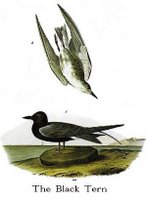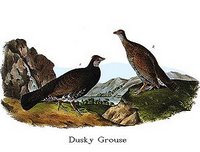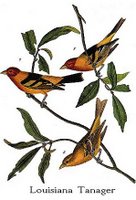North Dakota birds
 149 black tern
149 black tern150 western kingbird
151 upland sandpiper
152 sora
153 eared grebe
154 gray partridge
155 white-faced ibis
156 snowy egret
157 ferruginous hawk
158 Say's phoebe
159 sharp-tailed grouse
160 white-rumped sandpiper
161 great horned owl
162 western meadowlark
163 Swainson's hawk
Whoever thought a long bicycle trip would be a good chance to see birds didn't know what he was talking about.
Actually, that would be me. The trip is great for seeing the Great Plains, but not birds of the Great Plains.
Mainly, birds don't like me and my bike. Birds on powerlines (hawks, doves, kingbirds) or in the roadside grass (lots of little brown birds) fly away at the sight of me.
The most extreme example was along the Mouse River in North Dakota. Marshy water channels ran along both sides of the road, containing waterfowl of all kinds. As I rode through this corridor, birds rose from both channels and flew alongside me for a minute before veering off to the sides. It must have been a spectacular sight.
It's also hard to get anywhere efficiently on a bike. A refuge 20 miles off my route might as well be in the next state. And most good places to see birds have gravel roads, too hard on a touring bike.



